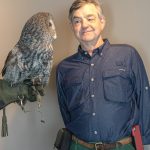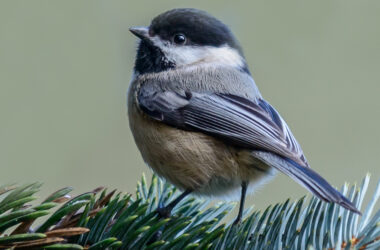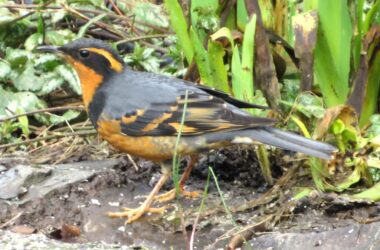The barred owl’s established breeding range in North America used to be in the eastern U.S. and Canada. In recent decades it has become habituated to living in urban habitats.
Common prey for this bird includes nocturnal mice, voles and rats—all plentiful in many manmade environments. As long as it can avoid the larger great horned owls, the barred can thrive around people, traffic noise, and city lights. Good food and a few dense trees for roosting and nesting satisfy the barred owl’s needs.
Now there is a proposed federal program to kill off the barred owls in areas where their endangered cousin, the northern spotted owl, is struggling to survive.
Here’s some explanation from the U.S. Fish and Wildlife Service website (read the full report here):
Barred owls are native to eastern North America. It is believed they began expanding west of the Mississippi River around the turn of the 20th century. This could have been a natural range expansion or human-caused, or a combination of both. One common theory is that the barred owl’s westward movement was precipitated by changes to the environment … as Europeans increasingly settled there and dramatically altered the landscape … Barred owls now outnumber spotted owls in many portions of the latter’s range.
Researchers have shown strong evidence that spotted owl population declines are more pronounced in areas where barred owls have moved into the spotted owl’s range and are greatest where barred owls have been present the longest … While habitat components reduced the effect of barred owls on these rates of decline, they did not reverse the negative trend.
Here are the areas along the Pacific slope that would be included in the barred owl removal: Olympic peninsula, western Washington Cascades, eastern Washington Cascades, Oregon Coast Ranges, western Oregon Cascades, eastern Oregon Cascades, Oregon Klamath, California Klamath, California Cascades, and California Coast. The Willamette Valley is not included on this list.
Public comment on the barred owl removal (killing) program ends Jan. 16. There will be no public hunting, only paid professionals. It is unlikely the removal areas would include cities or suburbs as spotted owls tend to cling to remote, more natural habitats in deep forest.
Barred and spotted owls may interbreed, producing a hybrid nicknamed “sparred owl.”
Here in Salem the barred owl has been regularly seen on and around the Willamette University campus for at least 7 years.
Rachel Alexander is Salem Reporter’s managing editor. She has this experience on Jan. 7:
Fortune finally smiled on me this weekend – spotted this barred owl at the corner of Chemeketa & Capitol, right by the Capitol, around 6 p.m Sunday. I saw a big wingspan out of the corner of my eye while stopping that my brain registered as “too big to be a crow,” so I looked and spotted this! We stopped the car and watched for quite a while.

That wingspan, by the way, is about 42 inches. The barred owl is 21 inches tall, slightly more than a typical red-tailed hawk, significantly bigger than a crow.
Correction: This article was updated to remove an inaccurate reference to a public hearing. Salem Reporter apologizes for the error.
For information about upcoming Salem Audubon programs and activities, see www.salemaudubon.org, or Salem Audubon’s Facebook page.
Harry Fuller is an Oregon birder and natural history author of “Freeway Birding” and the newly-published “Birding Harney County.” He is a member of the Salem Audubon Society. Contact him at [email protected] or atowhee.blog. His “Some Fascinating Things About Birds” column appears regularly in Salem Reporter.
SUPPORT OUR WORK – We depend on subscribers for resources to report on Salem with care and depth, fairness and accuracy. Subscribe today to get our daily newsletters and more. Click I want to subscribe!

Harry Fuller is an Oregon birder and natural history author of three books: “Freeway Birding,” "Great Gray Owls of California, Oregon and Washington," and "San Francisco's Natural History--Sand Dunes to Streetcars." He leads birding trips for the Malheur Field Station. He is a member of the Salem Audubon Society, and leads bird trips locally. Harry has just published a new book, BIrding Harney County.









